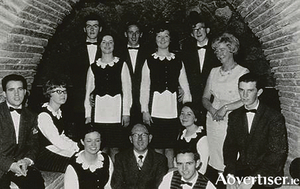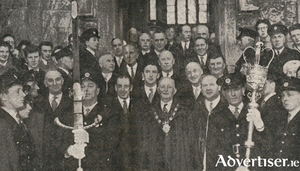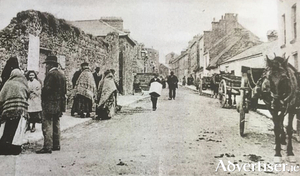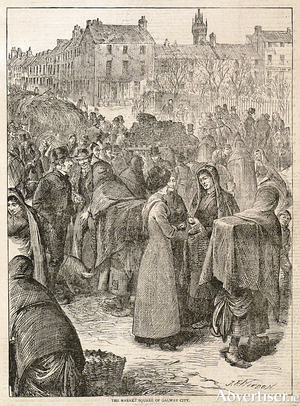Search Results for 'Edward Eyre'
4 results found.
The Railway Hotel

This ancient site on the southern end of what we now know as Eyre Square was occupied by a Knights Templars convent in the 13th century. By the 17th century Robert Martin had a large house on the site, but this was taken from him by the Cromwellians and given to Edward Eyre. The Eyre family held on to the property and on May 12, 1712, Edward Eyre, son of the above, presented the land in front of his house to the corporation as a place of recreation for the people of Galway. In 1827, a man named Atkinson built houses at this end of the Square and by 1845, the site was occupied by a block of tenements owned by Fr Peter Daly.
The Galway sword and mace

The Galway civic sword and mace are among the finest specimens of municipal corporation insignia in Ireland; the sword is particularly noteworthy and can be compared with the best of civic swords in these islands. Swords and maces were first carried by the king’s servants as symbols of the authority of the king himself. As time went on, the mayors and bailiffs of towns acquired swords and maces of their own, some following charter grants, others by mere assumption without specific authority. These were usually borne before the dignitaries concerned when they went in procession or were actively displayed when they acted otherwise in their official capacity. Maces, which were originally weapons, are staves of authority. Swords symbolise the legitimate use of force.
Eyre Street at the turn of the century

Edward Eyre arrived in Galway with the Cromwellian army, became a major political figure, and secured extensive grants from the Corporation and a considerable amount of property in both the city and county, mostly from displaced Catholic families, in the period 1660 to 1670. Most of this property was outside the town walls and included areas that we now know as the railway station, Forthill Cemetery, Victoria Place, Merchants Road, the Commercial Dock, Woodquay, Suckeen, and Eyre Square.
The market square in Galway city, 1883

The Square appears as a green piece of land outside the city walls on the early maps of Galway. The 1651 map shows it more or less in the shape it is today. In 1710, Edward Eyre (whose family had come over with the Cromwellians) became mayor of the city. He lived in a house roughly where the Meyrick Hotel is today and the patch of land in front of his house was known as ‘The Mayor’s Garden’. He presented it to the city and it became known as Eyre Square

